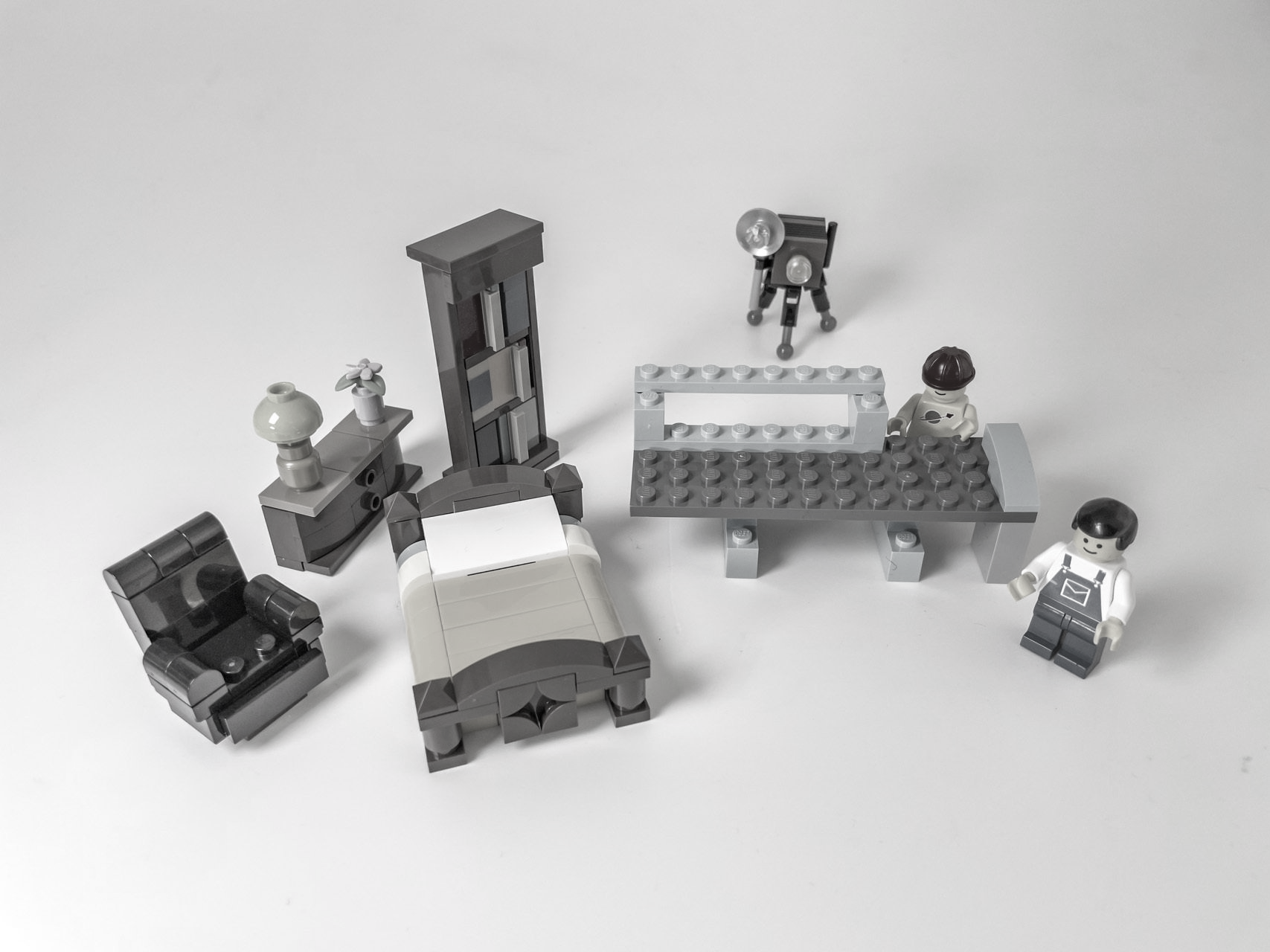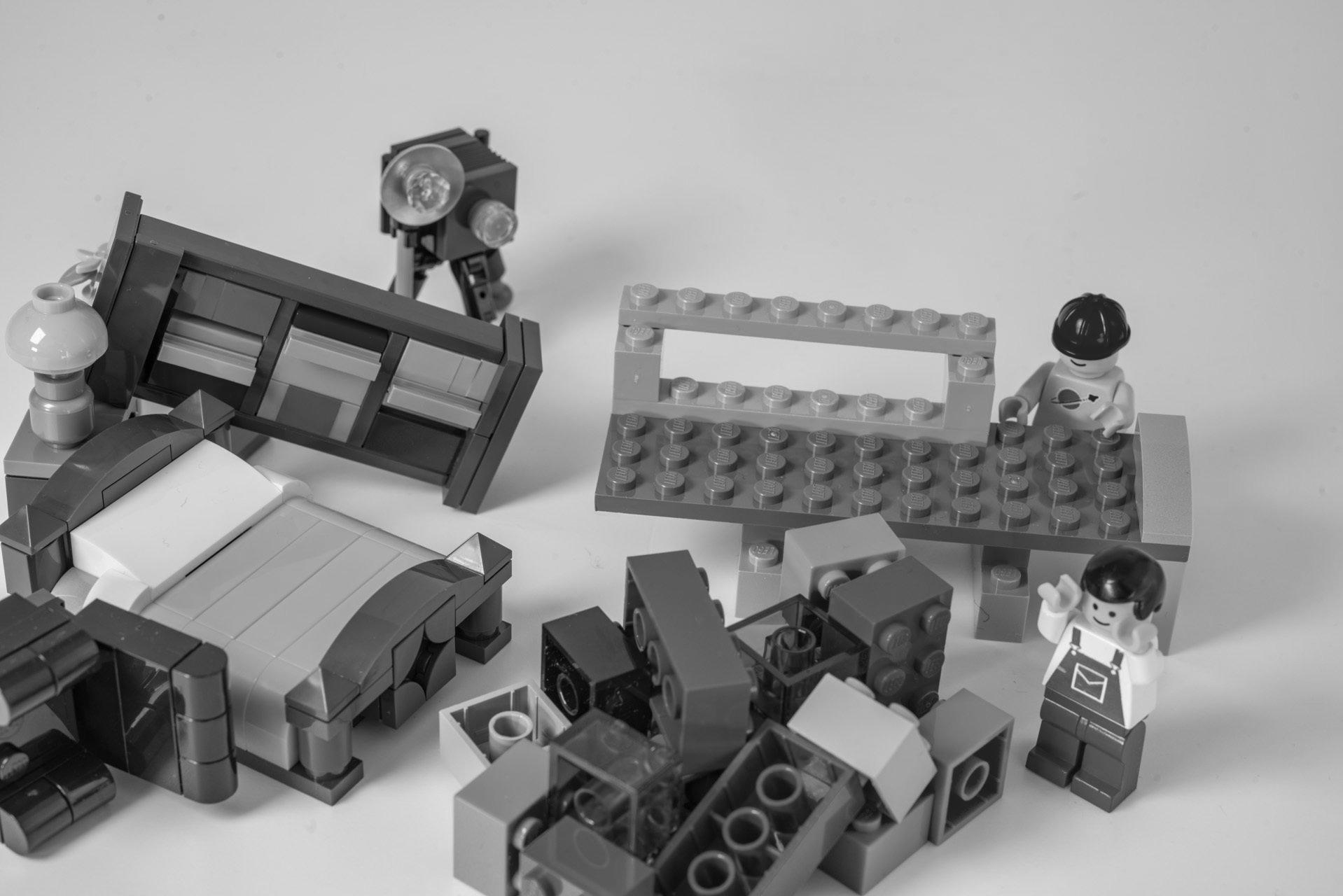Lean & Co.
Lean means slim. And lean management means designing a company in such a way that everything that is unnecessary is avoided. Everything that wastes resources, that drives up costs, that paralyzes and slows us down. In short, to find the answer to the following question: Is it possible to achieve the same or a better result with less effort, costs and frictional losses, without – and this is best of all – without losing quality?
Is that possible? Or is it not possible?
Get better, be faster, make more profits by making things leaner? You don't think that works? It works very well. What you need are the tools of lean management.
Imagine a two-lane highway being reduced to just one lane. The reasons for this are not important. This can be an accident as well as a construction site. The fact is, however, that now someone always has to stay standing. This results in traffic jams, delays and, of course, frustration for everyone involved.

Baker or carpenter?
Shall we take another look at our bakery? Or would you prefer a carpentry shop, a service company, a branch of industry? No matter what type of business, it will only work well and be successful if there are no bottlenecks in the company's processes.
But what is a bottleneck?
This is a resource that is only available to a limited extent.
- A person, a machine, a factor of time, financial resources
The performance of your company depends on this. If even one of these resources doesn’t “work,” you’ll be at a serious competitive disadvantage. And you can't compensate for that if you don't work on the bottlenecks immediately.

Our example is now a carpentry shop.
The company has invested in a new, ultra-modern and, above all, almost unappetizingly expensive machine for cutting wood. Everything should now become faster, better and more lucrative.
The fact is, all of the company's orders have to go through this, every cut in wood has to go through this machine.

Nobody wants that
And now we’re drawing a “worst-case scenario” on the wall that no company wants, but that could certainly be possible in almost every company.
- In view of the new machine, the sale of our busy carpentry shop with almost 30 employees very optimistically acquired and negotiated five large orders at the same time, in the firm assumption that the machine would do the job. There is only one such machine for the time being. There is also only one employee, who can “reasonably” operate the machine. This employee received a short training course. He can set process data that is necessary for different requirements. However, the machine “can” do much more. But there is no time left to learn all of this.
And suddenly everything changed
- When accepting the new projects, sales communicated very optimistic time estimates for delivery. According to the company's process data, the processes on the machine are running out of time. But no one expected this and took into account that changing the setting parameters on the machine is so time-consuming. This is mainly due to the required precision. A minimal incorrect entry and “the board is cut”.

All projects haywire
- The entrepreneur's goal is to complete the top project first. It's also about prestige. But it's already clear: the next project is also important. For economic reasons alone. And the third project has to work. Because this is a long-term customer.
The fourth project is not quite as big, but it only works if the delivery date is strictly adhered to, otherwise everything at the customer's end comes to a standstill. Completion was only possible with a guaranteed deadline.
What had to come comes
- The fifth project? Let's keep quiet about it because it's also important because the seller gave his word. See how it all works together? Prestige, profitability, customer orientation, contractual loyalty, emotions. All wonderful values of a company. But also an explosive mixture when the bottleneck arises, when two lanes suddenly become one lane. Now comes what had to come. It takes far too long for the parameters on the new machine to be changed. The software is extremely complex and equally complicated. The employee is under enormous pressure, which he of course cannot withstand, because there has been movement in the company for a long time. An unpleasant movement, however. Sales seems stressed because the top project is still not ready for delivery. Management is getting nervous because they realize this , what will happen now. It's called “Murphy's Law.” Do you know that? In simple terms: “Things could have gone wrong. And it went wrong.”
The pressure in the boiler increases
- Due to the increasing pressure, the pressure is increasing in almost all areas of medium-sized companies. This also increases the susceptibility to errors. And the vast majority of these errors only become visible in downstream processes. The machine now has to be reset. Everything at the beginning. Set everything up again. Further loss of time, loss of material, loss of image
And it's still not the climax
- Backlogs arise that will soon no longer be able to be caught up. And with so many new priorities, no one can see what is important. And the worst-case scenario has not yet reached its peak. To make matters worse, the employee at the machine is now also getting sick However, his replacement only has a short training period and therefore does not meet the necessary requirements. The possibility of ever having to use this employee was not really considered. This leads to further delays, even more annoyance and, in the meantime, poor communication within the company.

The frightening silence
- It's only a matter of time before this gets out. All subsequent processes are affected by the traffic jam at the cutting machine. Assembly cannot be carried out in the hall. Delivery is at a standstill. The assembly employees cannot attend to customers start setting up the projects. The time pressure, the loss of image and, above all, the economic damage increases and takes on unmanageable proportions.
Loss of time, loss of materials, lack of economic success
- Internal and external communication has long been going haywire. Also because the interfaces of the processes are not clearly defined. Orders are initially canceled. At least one project can be completed. However, due to delays and loss of materials, it did not achieve the expected economic success.
We better end this scenario at this point before we all get in a bad mood.
Something has certainly become clear:
There are such bottlenecks. And once your nerves are frayed, even the commitment and overtime no longer help.
That was a comparatively simple example. And it is very likely that the solution would have been possible. In our case:
- Better communication at all levels - that would have resulted in a more careful, forward-looking approach when accepting projects... Comprehensive competence of the employees - then the problems with the machine would never have occurred... Equivalent personnel replacement - then an employee's illness would not have been so extreme Weight dropped...





